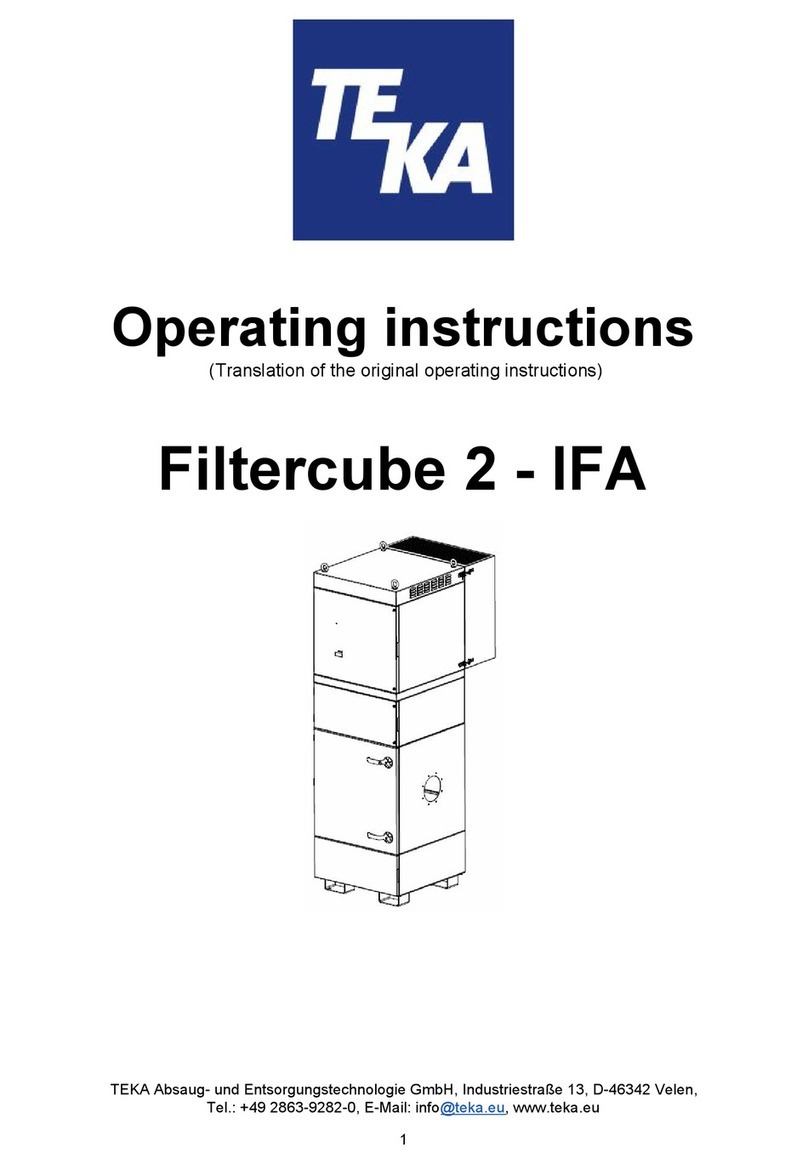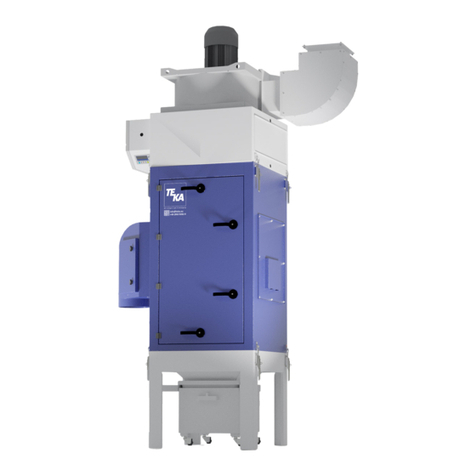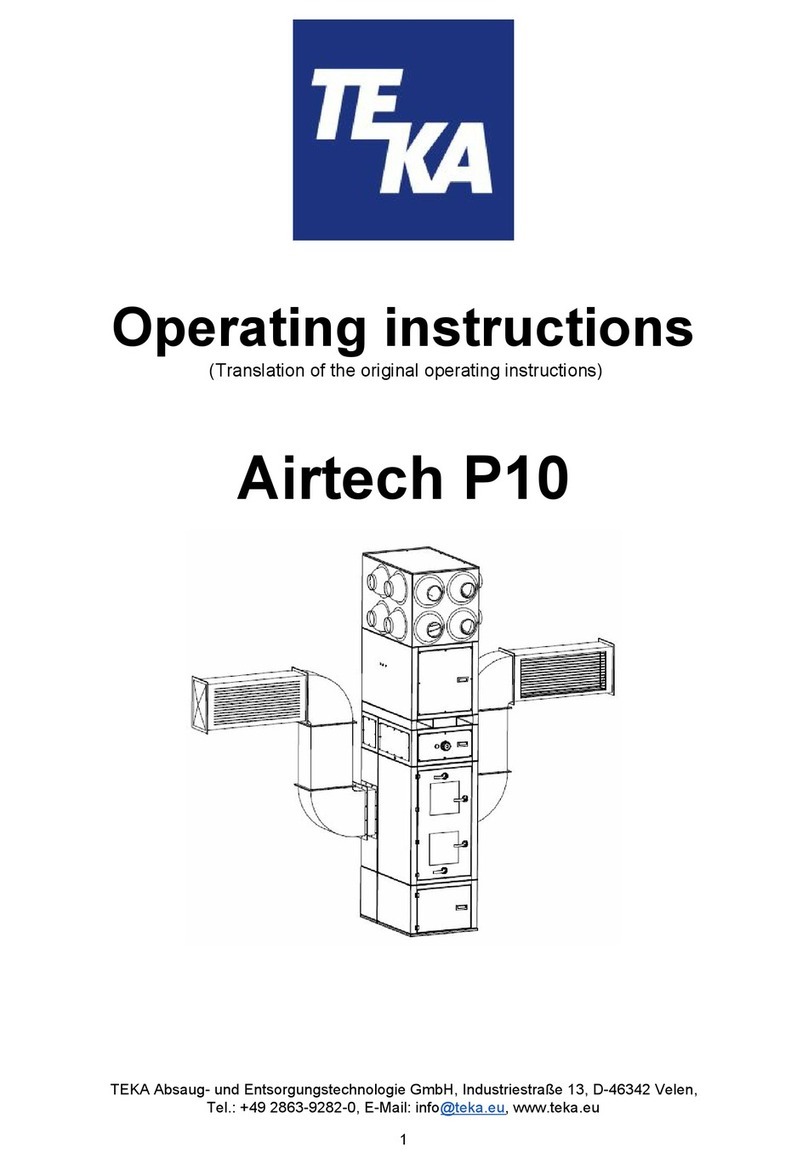BA_Airtech_ 10_IFA_180803_EN.DOC 7 03.08.2018
6 Commissioning
Improper work on the system and on electrical voltage components represent
considerable danger to life and limb in the event of improper handling.
The operator is responsible for ensuring that all work is carried out by authorised and
qualified personnel. The operator must ensure that their authorised personnel are fa-
miliar with all the safety indications in this manual in advance.
We recommend that each employee that operates the filter unit is trained with a train-
ing protocol in advance (see form attached).We recommend that each employee that
operates the filter unit is trained with a training protocol in advance (see form at-
tached).
A start up of the system in an inappropriate condition can lead to dangers to life
and limb.
Before the system start-up the commissioning measures described in this chapter
must be completed. In addition, all of the doors of the system must be closed and all
necessary connectors attached before turning on. The filter unit must not be operated
without the filter elements.
rotect all connection cables that lead away from the unit, from heat, moisture, and
sharp edges. It must also be ensured that the connections are protected from damage
caused by forklifts and the like.
Risk of electric shock.
If the unit is equipped with a frequency converter, then it may only be operated on
networks with an AC/DC sensitive RCCB. For frequency converter operation, the
cross section of the protective conductor
- must be at least 10mm²,
- and must be at least equal to the size of the operator side outer conductor
cross-section.
6.1 Electrical connection of the system
Work on electrical voltage components and attaching the power cable entails
the risk of electric shock. Work on electrical components can lead to serious
dangers to life and limb .
The operator is responsible for ensuring that all work on electric components is carried
out by authorised and qualified personnel. The operator is responsible for a potential-
free balance of the filter systems.
The device may only be operated if all necessary measuring cables and hoses
are connected. Not connected cables and hoses may lead to danger for life and
limb.
When delivered all visible cables and hoses are labeled according to their functions.
When connecting to the control, please observe the specifications on the circuit dia-
gram which is attached to the control.
The housing of the external control must be firmly and reliably mounted close to the unit on the wall
or at any other appropriate mounting point. The housing is not suited for outdoor installation.
Connect the control and the fan to the power supply.
Pay attention to the admissible supply voltage.
An incorrect power supply may result in an electrical malfunction of the system.
Once the controller is turned on, the cleaning function is in operation.This may
result in unwanted cleaning processes.
Only switch the controller on when the plant is in working order.
With incorrect motor rotation direction, the fan must be disconnected from the power supply and































